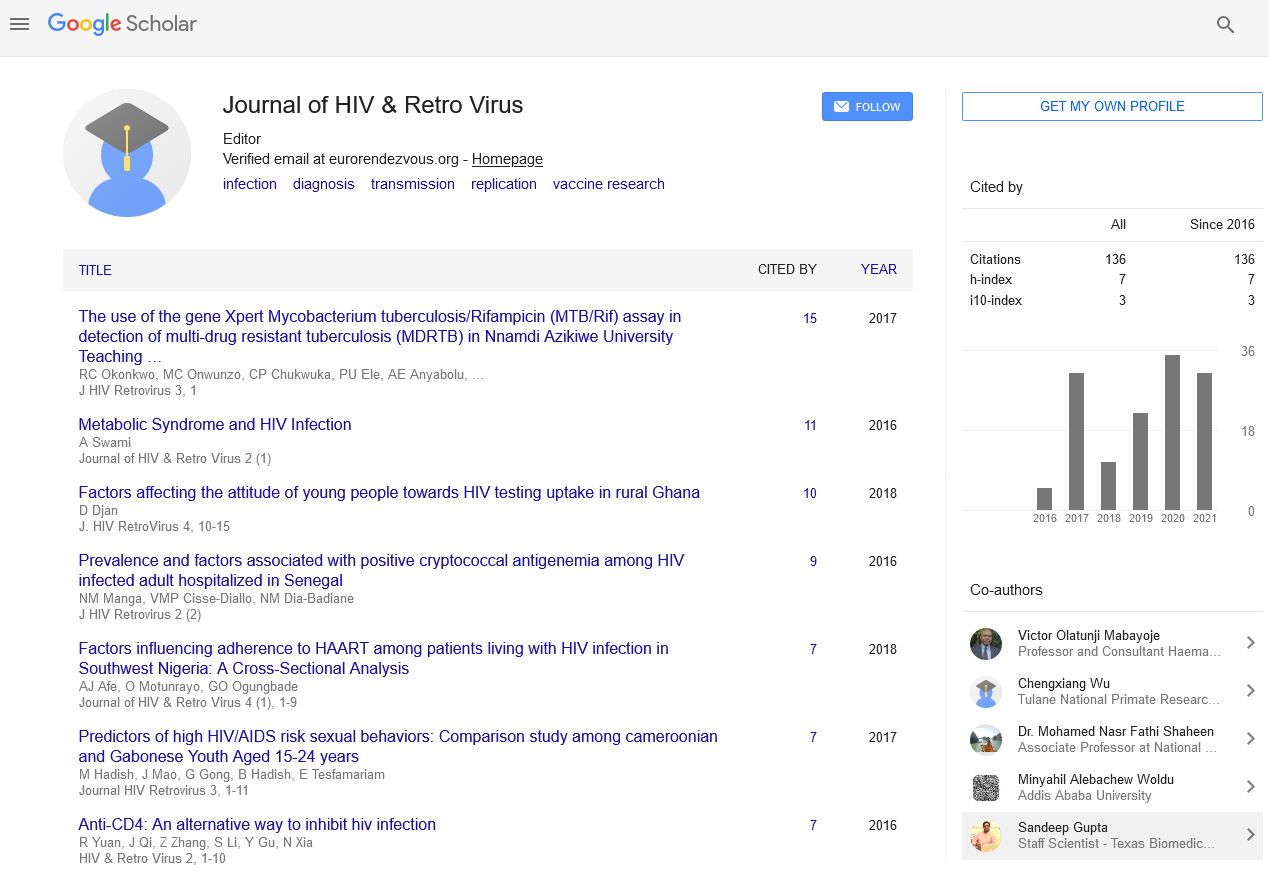Opinion - (2024) Volume 10, Issue 4
HIV Transmission Explained: Everything You Need to Know
Jing Liu*
Department of Microbiology, University of Hong Kong, China
*Correspondence:
Jing Liu,
Department of Microbiology, University of Hong Kong,
China,
Email:
Received: 02-Dec-2024, Manuscript No. IPJHRV-25-22486;
Editor assigned: 04-Dec-2024, Pre QC No. IPJHRV-25-22486 (PQ);
Reviewed: 18-Dec-2024, QC No. IPJHRV-25-22486 ;
Revised: 23-Dec-2024, Manuscript No. IPJHRV-25-22486 (R);
Published:
30-Dec-2024, DOI: 10.21767/21767-9676.10.4.35
Introduction
Human Immunodeficiency Virus (HIV) is a retrovirus that attacks
the immune system, weakening the bodyâ??s ability to fight
infections and diseases. Understanding how HIV is transmitted
is crucial in preventing its spread and controlling the epidemic.
Despite significant advancements in treatment and awareness,
misinformation about HIV transmission still exists. This article
explores the primary ways HIV is transmitted, factors that
increase the risk, misconceptions, and strategies for prevention.
HIV is transmitted when specific bodily fluids from an infected
person come into contact with a mucous membrane, damaged
tissue, or directly enter the bloodstream. The primary modes
of transmission includes unprotected sexual contact is the most
common route of HIV transmission worldwide. The virus can be
transmitted through the factors that increase the risk of sexual
transmission can be transmitted through direct blood-to-blood
contact, including an HIV-positive mother can pass the virus to
her child during, without intervention, the risk of mother-tochild
transmission can be as high as 30-45 percent, but with
proper medical care, this risk can be reduced to less than 2
percent. Healthcare workers may be exposed to HIV through
however, the risk of transmission in healthcare settings is low,
especially with proper use of personal Protective Equipment
(PPE) and adherence to standard safety protocols.
Description
Despite widespread education efforts, several myths persist
about how HIV is transmitted. It is important to clarify that HIV
cannot be transmitted through the several factors influence
the likelihood of HIV transmission. Higher viral load in an
HIV-positive person increases the risk of transmission. Anal
sex poses a higher risk than vaginal sex, while oral sex carries
the least risk. STIs such as syphilis, herpes, and gonorrhea
increase susceptibility to HIV infection. Consistent condom use
and medical interventions significantly reduce transmission
risk. Preventing HIV transmission requires a combination of
medical, behavioral, and public health interventions. Open
communication with partners about HIV status. PEP is an
emergency treatment for individuals who may have been
exposed to HIV. It involves taking antiretroviral drugs within 72
hours of potential exposure and continuing for 28 days. Needle
exchange programs to provide clean syringes, Supervised drug
consumption facilities, Access to addiction treatment and
rehabilitation. Prevention of Mother-to-Child Transmission
(PMTCT) HIV screening for pregnant women. Antiretroviral
therapy (ART) during pregnancy and breastfeeding. Safe
delivery practices, such as C-section when necessary. Use of
formula feeding instead of breastfeeding in high-risk cases.
Rigorous screening of blood donations. Strict donor selection
criteria for organ transplants. Use of universal precautions in
medical settings.
Conclusion
Organizations such as the World Health Organization (WHO),
UNAIDS, and the Centers for Disease Control and Prevention
(CDC) have been at the forefront of efforts to curb HIV
transmission. Long-Acting PrEP Injectable PrEP formulations
that provide protection for weeks or months. Gene Therapy
research exploring potential gene-editing techniques to cure or
prevent HIV. Understanding HIV transmission is fundamental to
preventing new infections and combating the epidemic. While
great progress has been made in reducing transmission rates,
continued efforts in education, medical research, and public
health interventions remain essential. By adopting preventive
measures, increasing awareness, and supporting affected
communities, we can work towards a future with significantly
reduced HIV transmission and ultimately, an HIV-free world.
Acknowledgement
None.
Conflict Of Interest
The author declares there is no conflict of interest.
Citation: Liu J (2024) HIV Transmission Explained: Everything You Need to Know. J HIV Retrovirus. 10:35.
Copyright: © 2024 Liu J. This is an open-access article distributed under the terms of the Creative Commons Attribution License, which permits unrestricted use, distribution, and reproduction in any medium, provided the original author and source are credited.

